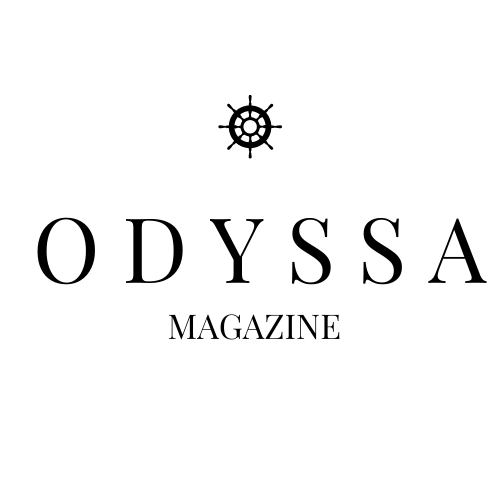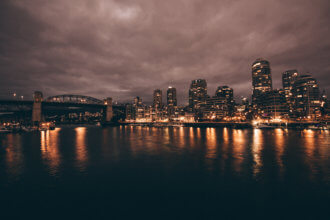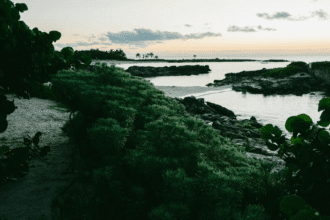A Guide to Vancouver Island, Canada’s Surf Capital (Part 1)
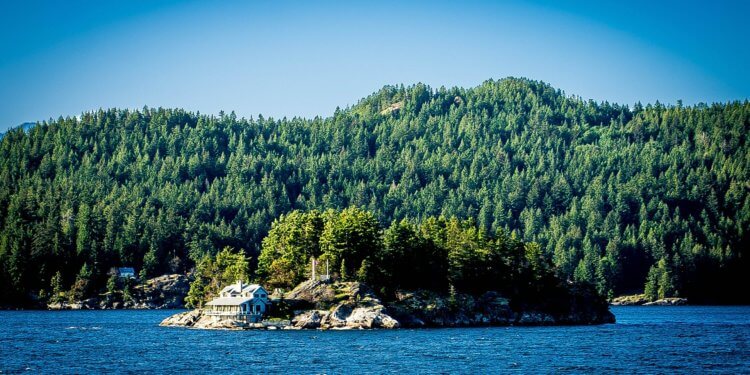
Editor’s Note: Gregg LaMarsh took a February trip to Vancouver Island, Canada. The idea of a Canadian winter didn’t stop him from exploring Canada’s surf capital. What follows is the first part of a quirky two-part series on his trip, with tips, suggestions, and reports based on his recent ramblings around Vancouver Island’s West Coast. Reading this piece is an adventure in itself.
By Gregg LaMarsh
What follows is lengthy. It may serve as a sort of trip-report-plus-tips-list based upon our trek around the west coast of Canada’s Vancouver Island, specifically Pacific Rim National Park and the two coastal village bases that sandwich it, Tofino (“peace”) and Ucluelet (aka “Ukee”).
It has been re-read many times by the Department of Redundancy Dept. to ensure that there was no undue repetition, incorect spelling or grammar badly. It has been re-read many times by the Department of Redundancy Dept. to ensure that there was no undue repetition, incorect spelling or grammar badly. It has also been cross-referenced, even though I was not cross. We hope that somehow, these facts and opinions may prove useful to outdoorsy types who are Tofino-bound.
From time to time, words from the First Nations Noocha-nulth tribe language will be used. Eclectic musical references, plus a bit of poetry, will also be included in an attempt to convey something of the funky counterculture spirit one finds. We liked the ‘end-of-the-road’ vibe. “Throw your heart into the ocean, throw your heart into the sea,” sang Sarah Slean seductively. That’s just what we did.
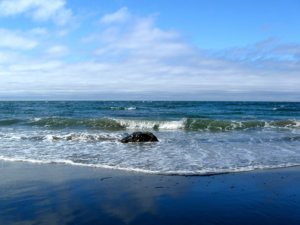 Most of 2016 had been a foul year for us and by this past February, we really needed to get away to some safe haven. “Baggage issues,” indeed. The Accuweather website was predicting that the famously wet west coast of Vancouver Island would be sunnier than normal this February. The traditional ‘horizontal rains’ of winter would be less frequent and the ratio of sunny-to-cloudy days would be roughly 2-1. So, we made a quick decision: “Damn the torpedoes and take us to the island.”
Most of 2016 had been a foul year for us and by this past February, we really needed to get away to some safe haven. “Baggage issues,” indeed. The Accuweather website was predicting that the famously wet west coast of Vancouver Island would be sunnier than normal this February. The traditional ‘horizontal rains’ of winter would be less frequent and the ratio of sunny-to-cloudy days would be roughly 2-1. So, we made a quick decision: “Damn the torpedoes and take us to the island.”
It was our first time to this, Canada’s surf capital. Note that the west coast of the island boasts a unique, Mediterranean-style microclimate amidst the nautical landscape. Two words: rainforest and beach. Behind the rugged shores of this, the country’s least snowy section, there are exotic palms and rare rainforest of the coniferous temperate kind. Rhododendrons started to blossom during our visit. Actually, it turned out that we only wore the provided “Tofino Tuxedo” (yellow raincoat with rubber wellies) but once, and experienced several glorious “postcard” days with temperatures ranging from 45-50 degrees F (Vancouver City was its chillier Raincouver self). Remind me to send Accuweather a thank you.
Deliberately journeying to the isle during the off-season and embracing a maritime frame of mind turned out to be good for the soul, restorative and relaxing. We were taken by the tranquility. Fair winds and following seas, as seafarers say. “Sail on, sail on sailor” (Beach Boys—Holland). First, we shared a taxi from Tofino airport.
Top 10 Reasons to visit Vancouver Island during the winter (especially for fellow Canucks):
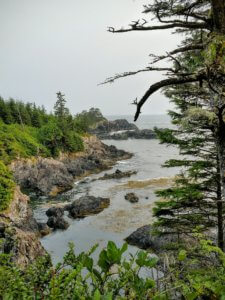 1. Lower off-season rates
1. Lower off-season rates
2. Lower off-season rates (much lower!)
3. Smaller crowds, fewer lines. At least 80% of annual visitors come between May-October. For example, peak season July line-ups at the popular Tacofino food truck lead to an hour from the time that you step into line until the moment you finally take a bite! Likewise, Fogust (foggy August).
4. No diminished loonie value loss vs. American dollar (obviously not just during winter)
5. No mosquitoes ever, no inoculations needed, no Zika, and no poisonous snakes
6. Shorter flights than heading overseas and for some nationalities, no need for visa
7. Same electrical system, tipping norms, and language (sorry; excuse me; please; after you, ‘eh)
8. No pollution and no poverty plus no risk of serious sunburn
9. No terrorists except for the furry kind: wolves, cougars, and bears. The latter don’t hibernate, but prefer to doze through winter months, with some exceptions. Bear with us.
10. Free Park passes for all in 2017, in celebration of Canada’s 150th Birthday, ‘eh?
Outstanding Map: The green Ucluelet Adventure Map
Most Quaint Tribal Language Comparison: In the local Noocha-nuulth language, Ucluelet means, “A safe landing harbor for our canoes.” Esowitsa, a nearby hamlet reservation within the actual park, means, “Those guys whose heads we bashed in with clubs.”
“We will share it with you. No man owns this land we’re on.’ (Kansas–Cheyenne anthem)
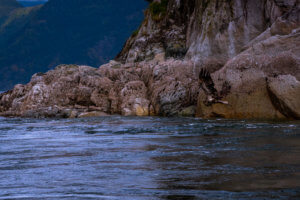 On the Fly: Tofino is a bird-watching hot-spot. Shorebirds flock to these coastal waters from April to September, especially at the quasi-official bird sanctuary at Jensen’s Bay.
On the Fly: Tofino is a bird-watching hot-spot. Shorebirds flock to these coastal waters from April to September, especially at the quasi-official bird sanctuary at Jensen’s Bay.
Birdsong always accompanied our walks. Quacking ducks, squawking seagulls, cawing crows and bald eagle cries completed a wild Pacific chorus. Screeching ravens act as forest sentinels and hold a special place in native myths, due to their uncanny ability to mimic other birds and even dogs. Hence their nickname “the trickster.”
For the eagles, it was courting season. Their calls were not what you’d expect from adults and were actually rather unseemly for such a winged noble as cixwatin, who “knows all the ways of the wind.”
Best place to take dogs for a scenic seaside stroll: At 6km in length, Long Beach in the park lives up to its name; Chesterman Beach (aka ‘Chestie’) always has many pawrents joining the dawn patrol with their amped canine companions along the broad curve of sand. One sees proof that some dog guardians-sons of beaches need reminders to pick up after their pooch.
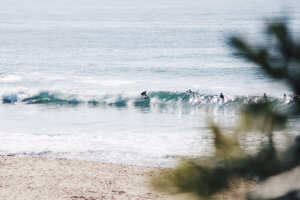 Most Popular Surfing Beaches: (sound of “Wipeout” drums)
Most Popular Surfing Beaches: (sound of “Wipeout” drums)
This is a swell area for surfdom. Endless Long Beach seems to be a favorite of stoked surfers, who come here from all over the globe and rate its epic breakers highly. But many other beaches also attract surfboarders: Combers, Cox Bay and Chestie. The latter is probably the best for beginners.
Surf culture and neoprene abound, including the female instructors at Surf Sister. Cool, clear water is only 10 degrees C (i.e. 50 F) year-round. Bikinis do not figure much here.
 Two Beachcombing Beaches: Florencia (aka Wreck). Such driftwood! Go mid-day to avoid any wolf hazard–locals advised us not to pass the Lost Shoe Creek rivulet there. Shell-seekers will also find a marine treasure trove at Lismer Cove by the park’s South Beach. It is a great place to search for polished blue glass and rocks amidst the endless clam shells and fresh kelp. But woe betide those who turn their backs on the fury of the ocean. Mother Nature Bats Last.
Two Beachcombing Beaches: Florencia (aka Wreck). Such driftwood! Go mid-day to avoid any wolf hazard–locals advised us not to pass the Lost Shoe Creek rivulet there. Shell-seekers will also find a marine treasure trove at Lismer Cove by the park’s South Beach. It is a great place to search for polished blue glass and rocks amidst the endless clam shells and fresh kelp. But woe betide those who turn their backs on the fury of the ocean. Mother Nature Bats Last.
Our Favorite Hiking Trail: There are many rich rainforest trails, but we were particularly uplifted by the majestic Wild Pacific Trail in Ukee, Tofino’s less-commercial twin on the bottom side of the park. If one is searching for the sublime and meanders the eastern half of the Amphitrite Lighthouse loop at sunrise, a peak experience awaits, including a sense of mystery in the forest. Towering trees combine with classic seascape to stand as one of Travel’s great moments (Californians will draw parallels with Point Lobos park). Note that at any given time, some trails may be closed. February trail closures: Spruce Trail; Gold mine; Schooner Cove; Rainforest ‘A’ and also Combers beach.
The Canadian “green” movement traces its roots back to these here parts. The pristine Clayoquot Sound area has been ground zero for the ongoing environmentalist’s struggle to protect what is the planet’s largest remaining coastal temperate rainforest. Less than 6% is protected. Nearby Meares Island kicked things off with its anti-logging protest back in 1984.
“There is unrest in the forest…” (Rush—The Trees)
It should come as no surprise to find eco-sensitive concerns behind some trail closures.
Check back soon for Part 2 of this travelogue.
About the author:
Former rock drummer and Special Ed teacher Gregg LaMarsh lives with his wife Ellen in Toronto, Canada. Travel has always played a major role in their lives. It is his hope that somehow this piece will be of use to fellow travelers. He is done. The end.
